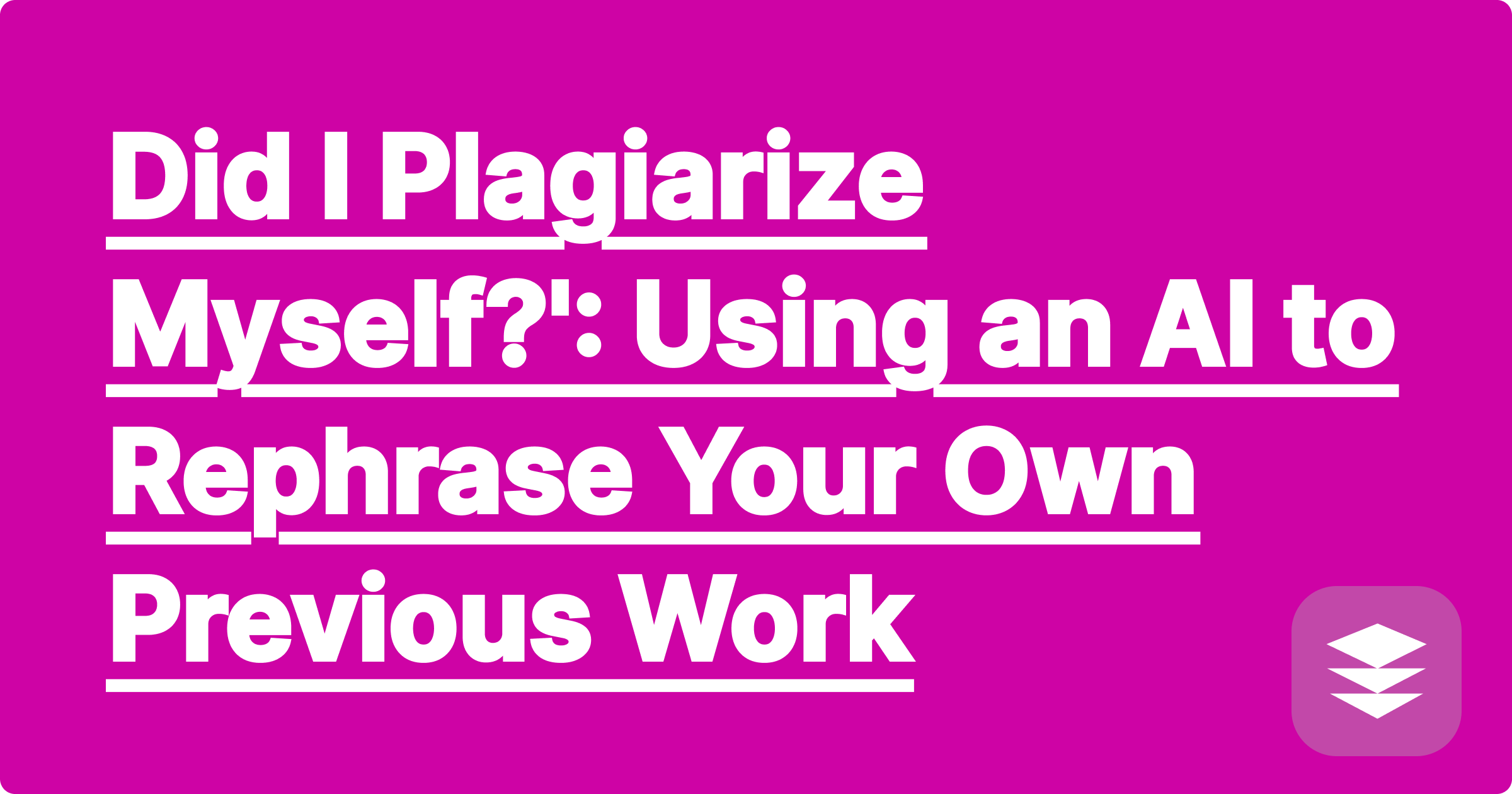
It's a common scenario for university students. You're taking a course this semester that's closely related to one you took last year. You realize that a paper you wrote for the old class has some incredibly relevant paragraphs for a new assignment. Your first thought is, "Perfect! I can just copy and paste my own work. It's my writing, so it's not plagiarism, right?" Wrong. This is a common and dangerous misunderstanding known as self-plagiarism.
Most universities define self-plagiarism as submitting the same work, in whole or in part, for credit in more than one course without obtaining permission from both instructors. It's considered a breach of academic integrity because you are getting "double credit" for a single piece of effort. The consequences can be just as severe as traditional plagiarism. So, how can you leverage your past work without violating the rules? You need to rephrase your own writing.
This is harder than it sounds. When you are the original author, you are often "stuck" in the same thought patterns and sentence structures. It's difficult to make your old work feel new and fresh. You need a partner that can look at your ideas with a fresh perspective. You need an AI assistant.
A tool with a "Humanizer" feature, like the GPAI Solver, can act as a powerful self-plagiarism checker and rephrasing tool. It's not about hiding your source; it's about building upon it to create something new.
The Ethical Workflow:
[Image: A diagram showing a document from "Class A" being fed into a GPAI "Humanizer" icon. The output is a new, different-looking document labeled "For Class B," emphasizing that the core idea is the same but the expression is new. Alt-text: A visual explaining how to rephrase your own writing with AI to avoid self-plagiarism.]
Don't think of it as reusing old papers. Think of it as building a personal knowledge base. Use GPAI Cheatsheet as a note taker to store the core ideas from all your past work. When a new assignment comes up, you can review your cheatsheet of ideas and prompt the AI to explain them in a new context, ensuring every submission is a unique piece of work.
A: Yes. Changing a few words here and there is not enough. The work must be substantially different to be considered original. This is why using an AI to help you fundamentally restructure and rephrase your sentences is a much safer approach.
A: In formal academic writing (like a thesis or publication), yes, you should absolutely cite your previous work if you are building upon it. For most undergraduate coursework, the more important rule is to ensure the work you submit for a specific class is original to that class. Always check your university's specific academic integrity policy.
The knowledge you gained from past assignments is a valuable asset. You should absolutely build on it. But the expression of that knowledge in a new assignment must be original. By using an AI as a "rephrasing partner," you can ethically and effectively leverage your past work, saving you time while upholding the highest standards of academic integrity.
[Need to reuse an old idea for a new paper? Let GPAI help you rephrase it. Try the Humanizer feature in our Solver today. Sign up for 100 free credits.]
How to Use GPAI as Your Personal 'Fact-Checker' Before You Speak Up in Class
The 'Rubber Duck Debugging' Method, with an AI That Actually Talks Back
I Have a Terrible Memory': Using an AI Notetaker as a Prosthetic Memory
The Art of the Nap: How AI Can Help You Study in Short, Intense Bursts
What Your Choice of AI Tool Says About Your Personality
How to Build a 'Career Moat' Using Your AI-Generated Knowledge Base
Surviving a Professor Known for 'Trick Questions' with an AI Test Generator
Is This Concept on the Exam? Using AI to Analyze Past Tests
The Ultimate 'Pre-Lecture' Ritual: How to Prime Your Brain in 5 Minutes
Did I Plagiarize Myself?': Using an AI to Rephrase Your Own Previous Work